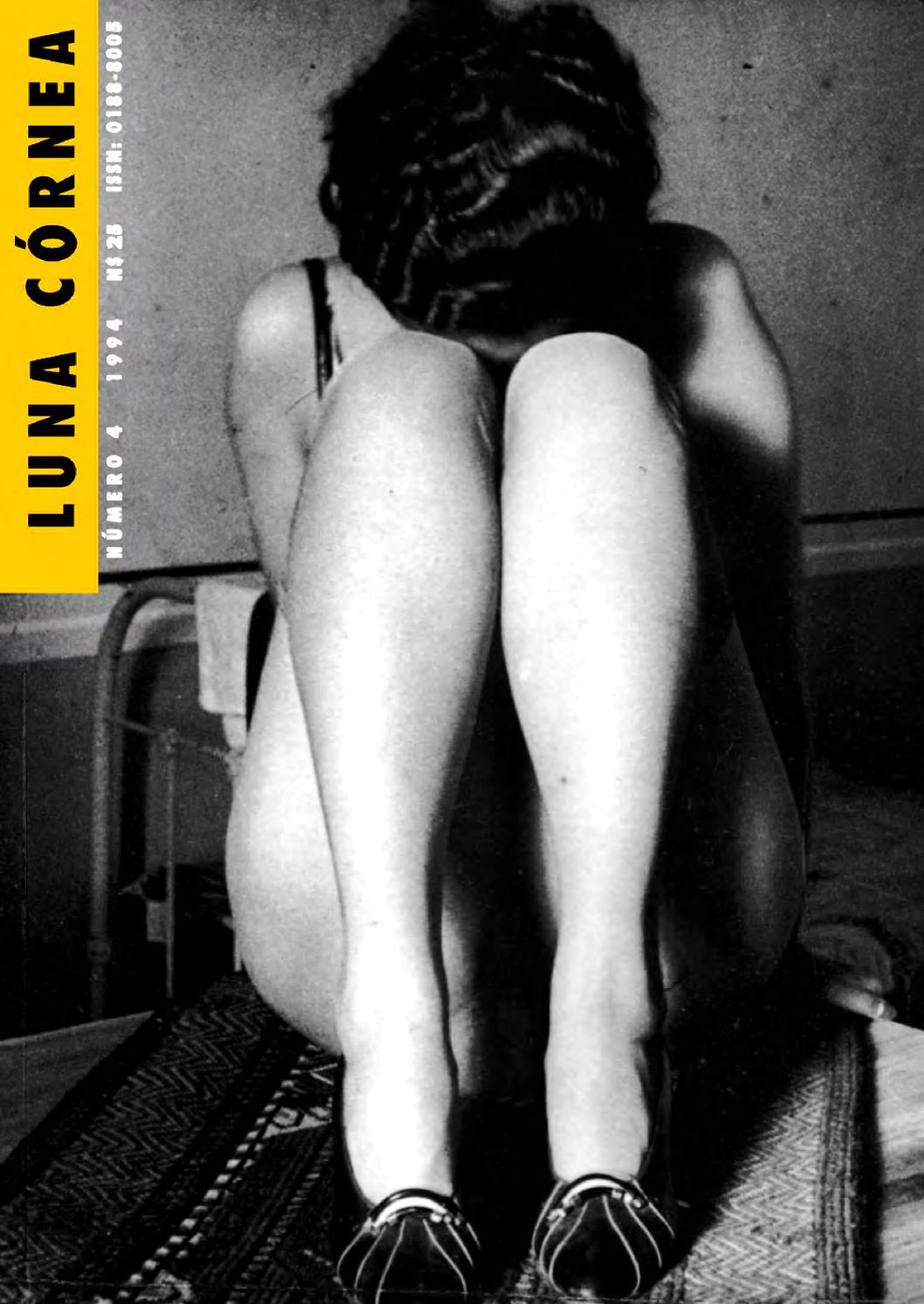Luna Córnea, 4: El cuerpo (1994) [Spanish]
Filed under magazine | Tags: · art, body, photography

“El cuerpo, y no el desnudo fotográfico, es la preocupación fundamental de este cuarto número de Luna Córnea. Aquí se encuentran trabajos de muy distinto tenor. El número abre con una arriesgada reflexión de Enrique Flores en torno a Leonardo Da Vinci, que lo inscribe como un fotógrafo anterior a la creación de este arte. Alfonso Morales nos introduce a la obra del fotógrafo poblano Juan Crisóstomo Méndez, y su mirada escrupulosa y obsesiva del cuerpo femenino, a través de sucesivos velos y fragmentaciones. Esta constelación de imágenes ocupa un lugar central en el número. Sergio González Rodríguez explora, por su parte, las modalidades de la fotografía prostibularia en México, un tipo de fotografía presente desde el siglo pasado hasta nuestros días. Con el nombre de “El cuerpo y sus dobles”, Mauricio Molina nos habla de la función de la máscara, el tatuaje y los velos en la abigarrada geografía de los cuerpos.
Este número, en suma, recopila un material rico y variado, y nos ofrece una visión inédita del cuerpo a través de sus múltiples metáforas. El cuerpo del placer, el cuerpo del delito, el cuerpo y sus enfermedades, el cuerpo de excepción son algunos de los aspectos que aquí se revisan.”
Publisher Consejo Nacional para la Cultura y las Artes, México DF, 1994
ISSN 0188-8005
131 pages
PDF (26 MB)
Issuu
More issues of the magazine
David Elliott (ed.): Alexander Rodchenko (1979)
Filed under book | Tags: · art, avant-garde, biography, constructivism, photography, productivism

The first English-language monograph on the constructivist and productivist artist and designer Alexander Rodchenko.
With essays by Alexander Lavrentiev, John Milner, Andrei Nakov, Szymon Bojko, Gail Harrison, Galina Chichagova, Zakhar Bykov, Hubertus Gassner, and historical writings by Rodchenko, Osip Brik, and Varvara Stepanova.
Published to coincide with the first retrospective exhibition of Rodchenko’s work shown at the Museum of Modern Art, Oxford, 10 Feb 79 to 25 Mar 79; Stedelijk Van Abbemuseum, Eindhoven, 11 May 79 to 17 Jun 79; Musée d’art contemporain, Montréal, 26 Jul 79 to 2 Sep 79.
Edited and with an Introduction by David Elliott
Designed by David King
Publisher Museum of Modern Art, Oxford, 1979
ISBN 0905836138, 9780905836133
136 pages
via Bint Bint
PDF (10 MB)
Comment (0)Elena Filipovic: The Apparently Marginal Activities of Marcel Duchamp (2013)
Filed under thesis | Tags: · archive, art, art history, curating, museum, photography, reproduction
“This study focuses on a series of fugitive operations that Marcel Duchamp incited in order to test, theorize, position, and even make his work as such. Not conventionally “artistic” in nature, even if intimately connected to the collection, presentation, reception, and valuation of art, these activities include Duchamp’s role as administrator, archivist, art advisor, curator, publicist, reproduction-maker, and salesman of his own oeuvre. Rather than merely procedural, auxiliary, or incidental, they might be thought of as constitutive, resulting in a still understudied but profoundly influential output by an artist who redefined so much of what, hence forth, would be called art. Here, those most iconic of Duchamp’s inventions, the readymades, although not the central objects of this study, are understood as significant insofar as they were not simply “nominated” to become artworks, but more importantly, because they were curated. It is precisely through curatorial operations—relative to much of Duchamp’s production, and constituting one of the central activities that this dissertation explores—that the artist rendered the discourse, institutions, marketing, and presentational strategies of art into something like his cardinal “medium.”
Tracing Duchamp’s perennial relationship to photography, reproduction, the museum, and the archive, and spanning the period between 1913 and 1969, three chapters closely examine a number of undeniably material things: chapter one considers the artist’s boxes of photographically replicated notes, the Box of 1914 (1913-14) and Boîte verte (1934); chapter two examines documentation of ephemeral exhibitions, recording Duchamp’s curatorial interventions as well as suitcases filled with miniature reproductions, the Boîte-en-valise (1938-42); and chapter three is dedicated to a permanent installation, Etant donnés 1. la chute d’eau, 2. le gaz d’éclairage (1946-66). However, the premise of this dissertation is that all of these gain a new significance if studied in relation to the elusive activities that actually constituted them as artworks. Together, they formed a counter-conception of the role of the artist, articulating—and complicating—the conceptual stakes of much of what is known of his practice and thickening into what Walter Benjamin called the artist’s “theory of the work of art.”” (Abstract)
Ph.D. Dissertation
Advisor: Hal Foster
Publisher Art and Archaeology Department, Princeton University, 2013
507 pages
PDF (2 MB)
PDF (images section) (10 MB)

